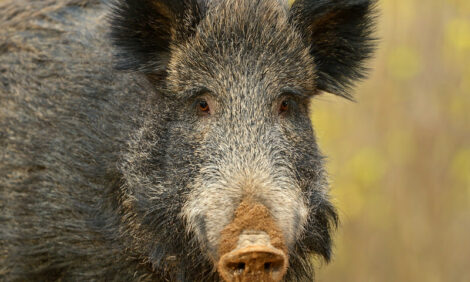



Exporters could gain from China's high-price syndrome
US - Retail pork prices in China rose more than 50 per cent from June 2006 to June 2007. The US Department of Agriculture's latest GAIN report says the trend for higher pigmeat prices is likely to continue and that could benefit US meat exporters.A recently published report from USDA's Global Agriculture Information Network (GAIN) says that wholesale prices in China increased as much as 95 per cent due to supply shortage, a severe disease outbreak among pigs in southern provinces, high grain prices and a general upward trend in meat consumption.
High grain prices and the increase in pork price have ramifications for other livestock sectors as consumers switch to alternate meats in response to high pork prices. The continued prices have rocked China's central government, prompting statements from the Premier about calming the market.
Pork is the most widely consumed meat in China and the sustained high price of the product has also attracted global attention - namely because of the pig shortage and the economic chaos within the domestic market. The situation could have a significant impact on global markets and export trading, says the report.
China's policy makers are eager to boost supplies in an attempt to pull down prices and diffuse escalating inflation rates. Incentives include orders for local governments to provide subsidies for pig production in the hope it will alleviate the supply shortage.
Opportune cost base
However, US economists believe China's current situation could generate long-term opportunities with significant potential for United States exporters.
Exports of US pork to China (including Hong Kong) exceeded $100 million in 2006, a record high. Some restrictions, based on health issues and feed additives, are currently hampering trade for some US suppliers, but on the whole the prospects look promising, says the report.
Cost wise, US pork is very competitive as production costs are comparable at around $50 per hundred pounds of pork produced. However, US producers are in a more favorable position because of the 'pig price:feed price' relationship. In China, the price of corn is relatively more important as a price determinant, and so, given all other factors are equal, as corn prices increase, US pork prices become more competitively placed within the Chinese market.
Realistically, land constraints will prevent significant expansion of the Chinese pork sector, yet the country must face the reality of a growing population and increased per-capita demand for meat products - imported meat will become a necessity and pork producers/traders stand to benefit.
Penetrable prospects
The GAIN report outlines key areas where meat producers may be able to penetrate China's food sector and satisfy its increasingly consumer driven markets.
It reviews price indices in relation to consumer and global trends, such as increasing grain prices, environmental constraints and the impact overseas markets may have on its internal market structure.
It also comments on the cyclical nature of its pork market and how it effects China's national economy.
Other factors that may influence pork price, such as market corrections (i.e. higher prices encourage more production), seasonal preferences (more fish and vegetables are consumed in the summer), and the impact of government programs to stimulate swine sector growth, are also discussed.
The GAIN report says that increased meat prices will become a general trend in China and although pork price increases are curtailing, it does not appear to be dropping that substantially. Prices look likely to remain high and that will provide opportunities for foreign producers.








